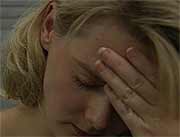
FRIDAY, April 26 (HealthDay News) — Nearly half of all working-age U.S. adults, or 84 million people, faced the prospect of crippling medical bills in 2012 because they had little or no health insurance, according to a new report by the nonprofit Commonwealth Fund.
There was one bright spot in the new numbers. For the first time in a decade, younger adults saw coverage gains, thanks to a new provision in the Affordable Care Act that allows children to remain on their parents’ policies until age 26. Nearly 2 million more young adults had health insurance in 2012 compared to 2010.
In an April 17 press briefing, Dr. David Blumenthal, president of the Commonwealth Fund, called the gains “good and unprecedented news” and said they helped to offset continuing declines in other age groups.
“But overall,” he said, “the survey shows the continuation of the bad news that sparked the move to reform our dysfunctional health care system.”
For the report, the Commonwealth Fund randomly surveyed over 4,400 adults aged 19 to 65 in 2012. Respondents were asked questions about their health insurance, medical bills and access to needed medical care. The Commonwealth Fund has conducted the study every two years since 2003.
These surveys show that the number of Americans who were uninsured or underinsured — meaning their out-of-pocket health care costs were considered to be too high relative to their incomes — has climbed steadily over the last decade. That figure rose from 61 million, or 36 percent of working age adults, in 2003 to 81 million, or 44 percent of adults, in 2010. The number rose only slightly in 2012 to 84 million, or 46 percent of all adults.
Lack of adequate health insurance has left millions struggling to pay off medical debt. Two in five adults, or an estimated 75 million people, said they had trouble paying at least one medical bill over the past year.
Forty-two percent said medical debt had lowered their credit score. Thirty-seven percent said they’d run through all of their savings to pay medical bills. Meanwhile, roughly one in four people said they took on credit card debt, were unable to pay for basic necessities like food and rent, or delayed career or education plans because of medical debt.
Costs are also preventing many from getting needed care in the first place. Over the last decade, the number of adults who said they didn’t go to the doctor when they were sick or couldn’t get a test or a prescription because it cost too much rose from an estimated 63 million in 2003 to 80 million in 2012.
Problems with access to care because of high costs were so pervasive, the survey found they were even affecting people who had good health care coverage.
“About 28 percent of people who were adequately insured” reported problems accessing care, said Sara Collins, vice president for affordable health insurance at the Commonwealth Fund. “It’s really a problem across the insurance spectrum.”
Poor and middle-income adults continue to be the most vulnerable to medical costs. Seventy-two percent of those who didn’t have enough health insurance in 2012 had incomes that fell under 250 percent of the federal poverty level. For single adults, that’s an annual income of about $28,000 a year, or roughly $58,000 for a family of four.
The report projects that the Affordable Care Act will help to mitigate some of those disparities when it takes full effect next year.
Of the estimated 55 million adults who had a gap in coverage in 2012, 87 percent would qualify for assistance to help them pay for health insurance under the new law. Roughly 28 million would qualify for the expanded Medicaid program, if it’s available in their state. And another 20 million would get subsidies to help them pay for health plans available through new health insurance exchanges.
“The findings point clearly to the need to move forward with implementation of the law,” Blumenthal said.
More information
To see the full report go to the Commonwealth Fund.

